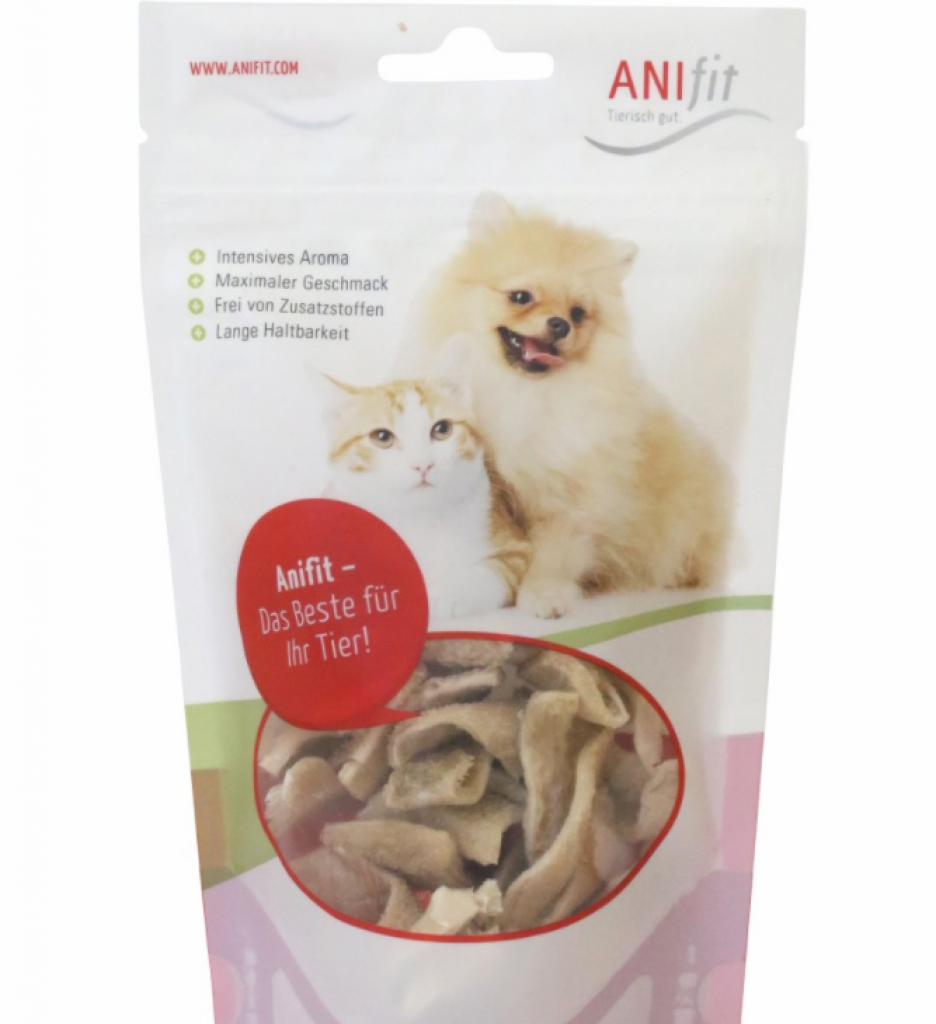Dog owners are becoming increasingly more concerned about feeding their four-legged friends (and rightly so!). A relatively new trend becoming more and more popular amongst dog food manufacturers is freeze-dried dog food and dog snacks.
Recently, there has been a shift by dog owners from the typically bleached rawhides that are common in most supermarkets to natural treats. At Dog Food Info, we believe it is a step in the right direction. However, as a dog owner, it is essential to know and understand the process involved.
In this article, we hope to be able to explain what freeze-dried means whilst looking at some of the pros and cons of the freeze-dried approach when it comes to feeding our dogs. We will also touch on the dehydrated process of producing dog treats and explain the differences.
If you have any questions or comments about freeze-dried dog food/snacks, or you would like to share your own experience with the process, then please feel free to leave a comment below.
What does Freeze-Dried mean?
Freeze drying, which is also called lyophilisation or cryodesiccation, is a low-temperature dehydration process that involves freezing a product, lowering pressure, and then removing the ice by sublimation.
Freeze-dried dog foods and chews can range from muscle meats, organ meats and meaty bones. The freeze-dried process is typically used to preserve food and aid with the transportation of products.
The Freeze-Dried Process Explained
The exact process of freeze-drying is divided into three key steps. To read the full article on how the freeze-drying process works, click here.
Step 1: Freezing Phase. In this step, the products are exposed to temperatures around -4.5°C to -8°C
Step 2: Sublimation. The pressure in the machine is lowered, creating a vacuum effect around the food. The trays that the foods are laid on gradually warm, causing the water to sublimate. This means that the ice in and on the food turns into vapour, which is then vacuumed out of the machine.
Step 3: Adsorption. During this phase, the temperature is raised slightly (still below 0°C), and the rest of the non-frozen molecules are removed. This whole process removes around 95% of the moisture in the food. There may be some vitamins lost from the food at this stage. However, the food still retains its nutritious value compared to some other food processing techniques.
Benefits of the Freeze-Dried Process for Dog Food
The main benefit of the freeze-drying process is increased food preservation time whilst still keeping a large proportion of the food’s nutrients.
Additionally, freeze-dried foods are often a good alternative for people who like to feed their dog’s a raw food diet. Feeding freeze-dried foods mean that your dog gets the same nutritional benefits as raw food without the costly price tag and mess along with a long food preservation time.
Disadvantages of the Freeze-Dried Process for Dog Food
Buying freeze-dried dog food and snacks can be costly compared to other alternatives. If you decide not to purchase these items directly from the manufacturer, then carrying out the freeze-drying process yourself at home can be very time consuming, costly, and in some cases, very confusing.
What is the Difference Between Freeze-Dried and Dehydrated?
So, we have already covered what freeze-dried food is and how its produced, but what is the difference between freeze-dried and dehydrated dog food?
Dehydrated dog foods are produced under higher temperatures when compared to freeze-dried foods. Dog food manufacturers place raw foods in a low-heat environment for an extended period, causing the water to evaporate and be drawn from the food.
The important factor here is the heating process. When raw food is heated, it undergoes structural changes, leading to the loss of nutrients from the food.
Despite the loss of nutrients, the remaining nutritional value of dehydrated dog foods is much greater than that of commercial kibble. However, as a dog owner, you must be aware of the loss of nutrients during this process when considering your pet’s diet.
Therefore, the main differences between freeze-dried and dehydrated food are:
- The production process.
- The differing temperatures.
- The number of nutrients left in the food at the end of the process.
Freeze-dried frequently asked questions:
Is Freeze Dry Dog Food Safe?
Freeze-dried dog food and treats are safe. However, at Dog Food Info, we always suggest carrying out manufacturer research.
Recommended Freeze-Dried Dog Treats
Dog Food Info recommend Anifit freeze-dried snacks. The brand is ranked as our number one dog food in Europe and offers a great selection of freeze-dried dog and cat treats.
What is the Difference Between Dry Food and Freeze-Dried Dog Food?
Dog Food Info recommend Anifit freeze-dried snacks. The brand is ranked as our number one dog food in Europe and offers a great selection of freeze-dried dog and cat treats.
What is the difference between dry dog food and freeze-dried dog food?
There is alot of difference between the two! Dry food is produced under extremely high temperatures resulting in a loss of nutrients in the food production phase. However, freeze-dried foods are processed under cold temperatures, resulting in a large proportion of nutrients being retained in the food.









